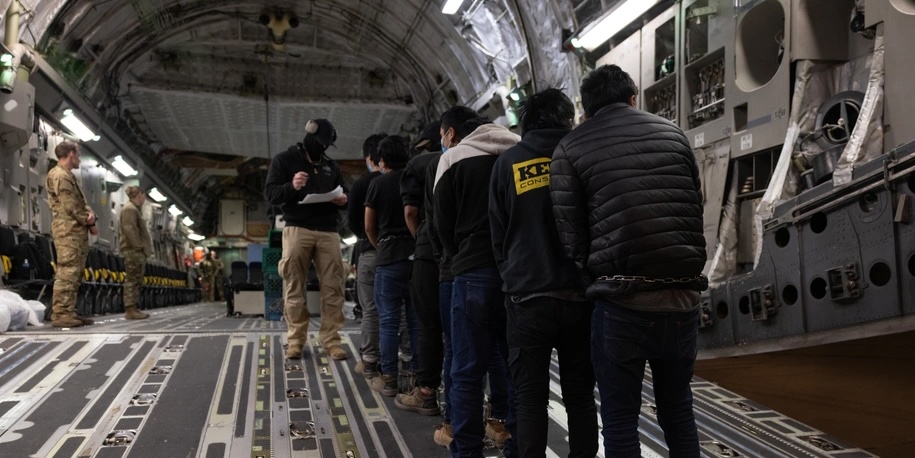Already a subscriber? Make sure to log into your account before viewing this content. You can access your account by hitting the “login” button on the top right corner. Still unable to see the content after signing in? Make sure your card on file is up-to-date.
The United States has now moved all migrants previously detained at Guantánamo Bay back to the US amid logistical and legal challenges.
Some shit you should know before you read: Shortly after President Trump took office, he announced that the US would house “dangerous” illegal immigrants at Guantánamo Bay as part of his administration’s broader crackdown on illegal migration. The plan, unveiled in January, called for detaining up to 30,000 migrants at the naval base before their deportation, with Defense Secretary Pete Hegseth calling it the “perfect spot” to hold high-risk individuals. Trump argued that some migrants were too dangerous to be held in the US or returned to their home countries immediately, stating, “Some people are so bad, we don’t even trust the countries to hold them.” Hegseth further justified the use of Guantánamo by suggesting it could serve as a secure holding facility for criminal organizations like Tren de Aragua before deportation. To support the initiative, the administration ordered the construction of nearly 200 tents at the base.

What’s going on now: In a notable reversal, the Trump administration has transferred all migrants previously detained at Guantánamo Bay back to the US, raising questions about the viability and cost of the offshore detention plan. Over the past two days, 40 migrants were flown to Louisiana, where they are now held at an ICE facility in Alexandria. This follows a similar transfer two weeks ago when 48 migrants were sent from Guantánamo back to the US, as well as the February 20 repatriation of 177 Venezuelans.
The decision to transfer migrants back to the US was reportedly driven by Guantánamo’s failure to meet ICE detention standards, particularly regarding housing conditions. As part of the administration’s plan, nearly 200 tents were constructed at the base to accommodate detainees, but the facilities did not comply with ICE’s requirements for proper ventilation, air conditioning, and electricity. Without these basic necessities, the tents were deemed unsuitable for long-term detention, and their construction was ultimately paused in February. Additionally, ICE regulations mandate specific health, safety, and legal access provisions for detainees, which proved difficult to implement at the remote military base.
The transfers also come amid ongoing legal battles challenging the Guantánamo migrant operation. Civil rights organizations, including the ACLU and the Center for Constitutional Rights, have filed lawsuits arguing that migrants held at the base were denied legal access and due process. A federal court in Washington, DC, is set to hear two cases, one challenging the overall legality of detaining migrants offshore and another seeking to block further transfers of detainees from US facilities to Guantánamo. A judge has already issued a temporary restraining order preventing three migrants from being sent to the base, though they were later deported to Venezuela.






